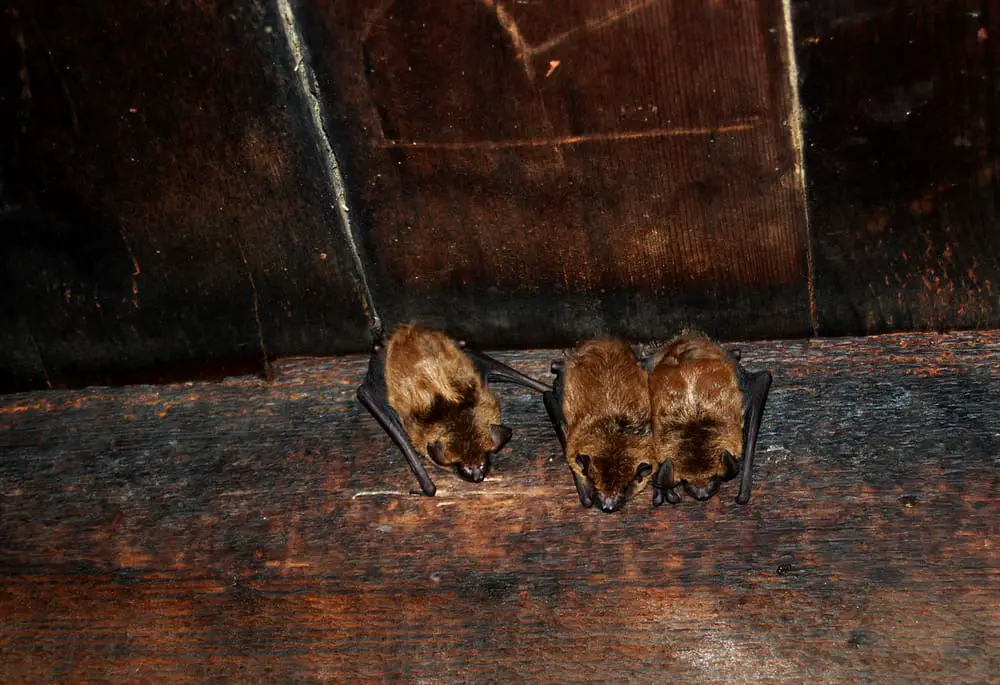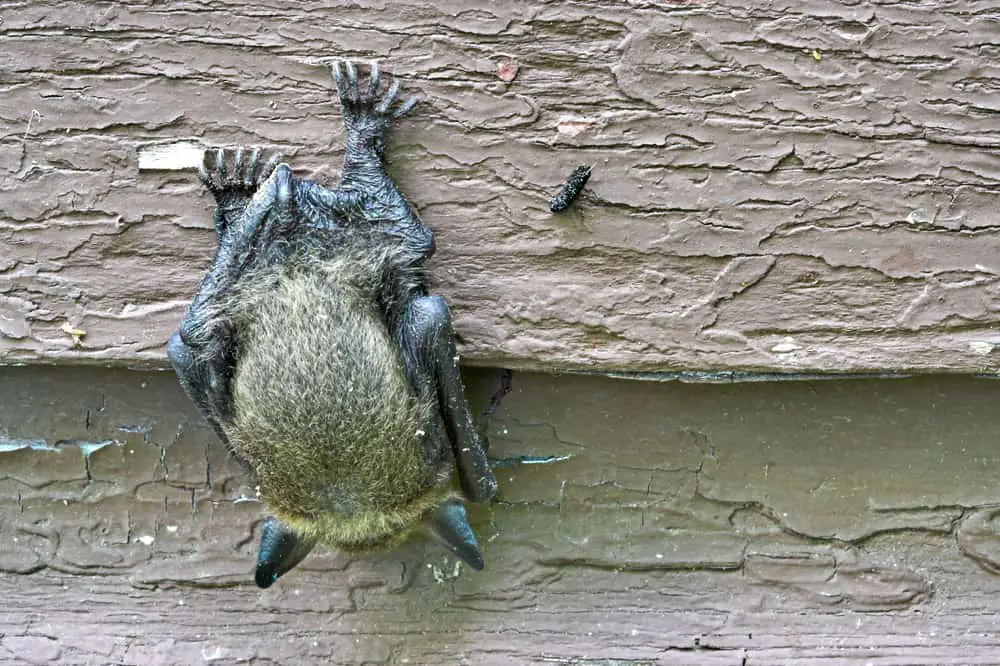Growing up, I used to love watching the bats come out at dusk and swoop and dance through the sky. Their high-pitched squeaks and screeches can be heard as they perform ariel acrobatics in the setting sun.
Bats love to roost high up and will take to trees when available. But when nesting territory is scarce, sometimes you’ll find bats in chimneys, and that can be a real problem. When bats make their way through the gaps in your roof or the spaces where vents stick through, you will need to deal with the situation ASAP.
How Do I Get Bats to Leave Roof Vents and Chimneys?
Bats roost and build a big colony of bats that can quickly invade your chimneys and roof vents. Exclusion devices such as exclusion tubes are the safest and most effective method of pest removal.
If you try to remove bats incorrectly, they can die in your walls or escape into your house. This can make a little problem bigger and expose you to health risks. Bats that die in chimneys can smell for weeks, and in some places, killing bats is illegal, so lighting a fire to smoke them out is a big no, no!
Exclusion devices work by letting bats out of the chimney but won’t allow them back in. This device needs to be used with other methods like caps on chimneys and wire wool to ensure that all bats are safely evicted from your chimney.
How Do Bats Get in Chimneys?
Bats become nuisance wildlife when they slip into chimneys and roof vents through gaps in house materials. Often there are small slits that bats will slip into and build their colony. Bats can squeeze into gaps as small as 3/4 of an inch wide. They do not damage or widen holes like birds or rodents but do leave a black oily residue full of biological matter.
Over time bats can have multiple broods and start a maternity colony. If you don’t remove the bats, they can fly into your house or lead to fire hazards during winter when you want to use your fireplace. Damaged wall siding and exposed material can invite bats to enter your chimney.
Bats may have multiple ways into a house and can have babies inside your chimneys. Babies cannot leave the nest, so if you use a one-way exclusion device at the wrong time of year, you could inadvertently kill babies. The goal is the removal of all the animals alive and unharmed. Areas with an abundance of chimneys are most likely to have a bat infestation.
When To Remove Bats from Chimneys?
Early spring, when female bats just begin to nest, and after August is the best times for bat removal. The time between these seasons is maternity season and when babies are born. Babies cannot fly, so removing the bats at this time would be ill-advised.
You can tell if there are already babies, as the noise the bats make will increase as the brood grows. Using light sources and products for bats can help you tell the number of bats in the attic or chimney by waking them up. Sometimes you will see bats around busted windows and torn-up window screens, which indicate they are looking for a new nesting spot.
Hardware cloth and chimney screens can be used but you must make sure the bats do not get trapped under it and have a way out from the mesh through the exclusion device. Remove bats when the babies have already started leaving the chimney at night.
Signs Bats Have Found Your Chimney
Bats aren’t the only animals that make their homes in our houses. Chimney swifts also like to move in. You need to be aware of different signs that indicate that it is bats living in your chimney so you can take the appropriate steps to get them out.
Bats in chimney sounds and other indicators can be found below.
| Sign | Where to Look | When to Look |
| Bats leaving your chimney at dusk | At the roof | From 30 mins before to 30 mins after sunset |
| Black oily stains where a wall meeting a roof occurs | At roof eaves and walls | During the day, with good light |
| Noises and wings fluttering in the chimney | Listen through vents and chimney openings | Listen during dusk and dawn when bats wake up and settle in the nest. |
| Dead insects and fewer pests | Look around exterior lights | look at night when insects and bugs are attracted to the light |
What To Look For

Telling bats from birds is important as different strategies are needed for each type of animal. There are a few things you should look for if you are trying to determine that bats are the pest in your chimney.
Bats are dirty, and they squeeze into holes. The filth coats the outside of the hole and is a clear sign that bats have moved in. Look around horizontal gaps that are about an inch wide instead of large verticle vents and slits in chimneys.
Shapes moving away from a chimney at dusk indicate bats, whereas shadows flying toward the roof is probably chimney swifts. Check the direction of shapes to confirm that bats really are the issue.
Bats around your roof and windows can also indicate a nest in your house. Increased bat activity during the maternity season can also be spotted and can show you where the bats are roosting in large numbers.
What To Listen For
Bats don’t make a ton of noise, but you can hear them and tell them apart from birds if you listen closely and at the right time. With birds like chimney swifts, you often hear rustling and flapping in the evenings and mornings. With bats, you will hear a whirling sound as they flap their wings much faster than birds.
Bats also make vocal noises that can be heard. Children and women are more likely to hear bats than men due to the high frequency of their screeches. Bats will make more noise when the colony grows, and babies begin to grow.
What To Smell For
Bats can create a stink which you may smell when you open the vents or try to use your fireplace in the fall. Bat urine and bat guano can accumulate very quickly and can lead to health issues. If you smell urine and other noxious odors when in the attic or cleaning gutters, check for the other bat signs to confirm your pests and then deal with them accordingly.

